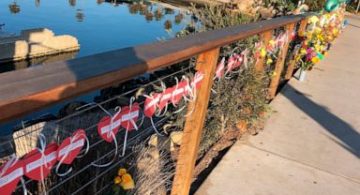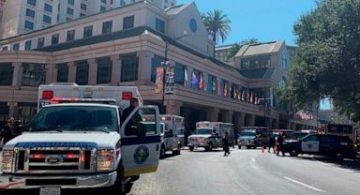Prosecutors in the case of a Minneapolis police officer who shot an unarmed woman have been hammering away at what could be a key element of Mohamed Noor’s defense — that he heard a loud slap against his police SUV that stirred fears of an ambush.
The prosecution has tried to raise doubts about whether that slap occurred and attacked officers and investigators for apparent missteps, noting that police at the scene turned body cameras on and off at will, did not share information and possibly disturbed evidence, according to court testimony.
Noor, 33, is on trial for murder and manslaughter in the July 15, 2017, death of Justine Ruszczyk Damond, a 40-year-old dual citizen of the U.S. and Australia who reported a possible sexual assault in the alley behind her home. She was shot after she approached the vehicle.
One point of contention is whether Damond slapped the SUV, causing a thump that Noor’s partner, officer Matthew Harrity, testified scared him so much that he drew his weapon. Defense attorneys for Noor have said he also heard a loud bang on the squad car, but prosecutors have suggested the slap was concocted. They insist the officers faced no threat.
Harrity testified that he did not tell anyone about the thump on the night of the shooting. The first time he spoke about a noise was three days later, when he sat down for an interview with his attorney and state investigators. But somehow, the notion that Damond slapped the car made its way into a search warrant affidavit hours after the shooting.
“There was a conspicuous absence of information,” Chris Olson, assistant agent in charge of the state Bureau of Criminal Apprehension, testified this week.
As he was trying to figure out what happened, Olson said, the scene’s incident commander, Minneapolis police Sgt. Shannon Barnette, told him she had a brief conversation with Harrity, and that it sounded like Damond had made contact with the car. Olson gave contradictory testimony about whether he or Barnette first suggested that Damond slapped the car, and how that information was passed on to another BCA investigator who crafted the search warrant.
Bradford Colbert, a law professor at Mitchell Hamline School of Law in St. Paul, said that under law, Noor had a right to use deadly force to protect himself or others. For prosecutors, Colbert said, the preferred narrative would be that Damond was shot after merely appearing at the window. For the defense, it would be better if Damond slapped the car, creating the loud, startling noise.
“I can see why the state would be arguing or trying to convey that there was no slap,” he said.
Jennifer Kostroski, a BCA latent print examiner, testified there was no forensic evidence to show Damond touched the squad car. But under questioning from the defense, she said knuckles or a backhand slap would not leave prints.
Other witnesses said the squad car was partially dusted for fingerprints — but not entirely — then sent to be washed just hours after the shooting.
“They certainly could’ve handled it better,” said Marsh Halberg, a Minneapolis defense attorney who is not connected to the case. He stopped short of saying investigators made mistakes, but said, “in hindsight, I think everyone could agree things could’ve been done more smoothly, more thoroughly, more independently.”
Representatives of the Minneapolis Police Department and the state BCA said they could not comment.
The trial has revealed other apparent missteps by investigators. Some Minneapolis police officers turned their body cameras on and off, so it’s possible that key statements went undocumented. One officer was not told that Noor fired from inside the vehicle, so he entered the car and possibly disturbed evidence. Another investigator was concerned that Damond had been covered by a sheet, again possibly disturbing evidence.
And, one witness testified, state investigators did not follow up on information about the original 911 call made by Damond, so prosecutors conducted their own investigation. Some officers on the scene did not initially know they were dealing with a police shooting — though body camera video shows Harrity and Noor reported that to the first responding officers.
Barnette testified last week that she did not speak with Noor about the shooting that night, acknowledging on the witness stand that if she had, he might have provided different information than his partner.
Colbert said it’s possible the state is raising these issues in an attempt to show that “everybody knew this went down wrong,” and police responded by going into cover-up mode.
“If it was just simply an accident, you wouldn’t go to those lengths. That seems to me to be the state’s strategy,” Colbert said, adding that prosecutors seem be trying to show that police “knew from the get-go that this is wrong, and they are just trying to cover their tracks.”
———
Check out the AP’s complete coverage of Mohamed Noor’s trial.





